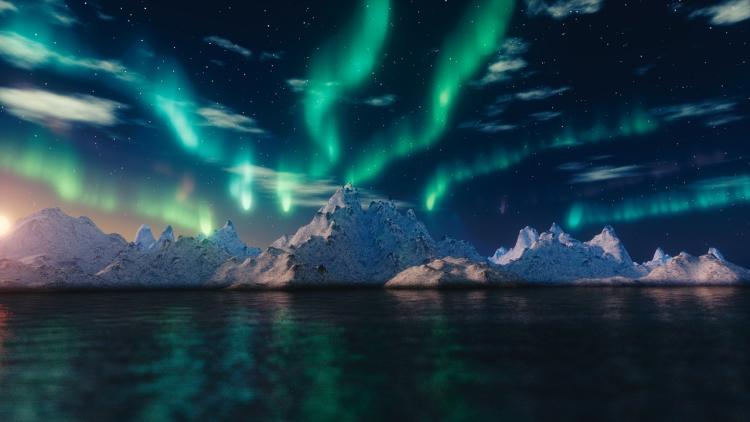New Arctic studies certificate to explore rapidly changing, politically charged region
In the spring CU Boulder will become only the fourth higher education institute in the nation to offer an Arctic studies program, providing students with expertise on a long-neglected region gaining geopolitical importance due to climate change and its impacts.

The Northern Lights over the Arctic.
“This is a very large area of the world in the midst of very rapid changes that will reverberate around the globe,” says geography Professor Mark Serreze, who will offer a new undergraduate course, Introduction to Arctic Climate and the Environment, as part of the program.
Available to undergraduates of any major, the interdisciplinary, six-course (18 credit) Arctic studies certificate program will explore everything from the scope of and science behind the loss of snow and ice cover in the Arctic to the way it’s impacting indigenous peoples and global trade routes. Students will also study the rich cultural history of the region, from the sculptures and printmaking of the Inuit, to the contemporary music of Icelandic singer-songwriter Bjork, to the film and photography inspired by visitors to the region.
“The stark landscape of the Arctic has served as a backdrop for a lot of creative thinking and made it a source of fascination for outsiders,” says Ben Tietelbaum, an assistant professor of ethnomusicology and director of the new certificate program.
CU Boulder is well poised to offer the program, Teitelbaum says, because of on-campus resources like the National Snow and Ice Data Center (which Serreze heads up), the Institute of Arctic and Alpine Research (INSTAAR) and the Cooperative Institute for Research and Environmental Science (CIRES), as well as strong offerings in international affairs, Nordic and Russian studies and ethnic studies. A study abroad program to the far reaches of northern Canada is also in the planning stages.

Icelandic folk singer Bjork
“The curriculum is designed to help students look at the Arctic from perspectives of natural science, social science and the humanities. We want to provide a comprehensive examination of the region and the people who live in it,” Teitelbaum says.
Defined as the region above the Arctic Circle, the Arctic spans three continents, encompassing territories in Canada, Greenland, Finland, Iceland, Norway, Sweden, Russia and the United States. It’s made headlines in recent months due to a heatwave that has raised temperatures 20 to 30 degrees Farenheit above average in certain areas above the Arctic Ocean, threatening to further erode historically low sea ice coverage. Such warming could impact global weather patterns, some research suggests.
Sea ice loss could also ultimately change shipping patterns, as industries eye the once frozen Arctic as a northern shortcut for cargo ships traveling from China to Northern Europe. As the region grows warmer and more hospitable, extractive industries – like oil and mining companies – are also gaining interest in the region. This could pose a threat to traditional lifestyles and increase conflicts with indigenous peoples, Serreze says. The military is also interested in the region, as it realizes it will soon have more blue water it will need to patrol.
“All eyes are on the North right now,” Serreze says. “It’s a really ripe time for students to become engaged in what’s happening there, and this certificate will help them do that.”


